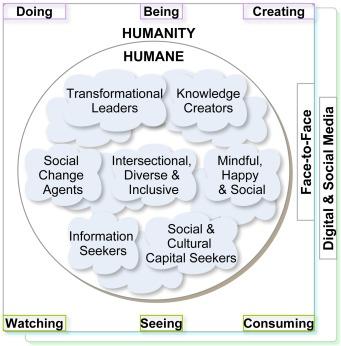Global Policies Shaping the Future of Education: Key Reforms and emerging Trends
The education landscape is evolving rapidly due to the impact of global policies, technological advancements, and shifting societal needs. As we look toward the future of education,it becomes evident that international cooperation,innovative reforms,and emerging trends are pivotal in redefining learning opportunities for students worldwide. In this complete article, we’ll explore the global policies shaping the future of education, highlight key reforms, showcase emerging trends, and offer practical examples and insights to empower educators, policymakers, and enthusiasts alike.
Why Educational Policies Matter in a Global Context
Educational policies serve as the foundation for future generations, ensuring systems remain relevant, inclusive, and enduring. In today’s interconnected world, cross-border educational frameworks and international cooperation are more notable than ever before. By understanding and adapting to global educational policies, nations can create high-impact learning environments that address 21st-century challenges.
- Quality Assurance: Ensures high standards and equitable access across borders
- Global Competitiveness: Equips students with skills needed in a digitized workforce
- Economic Growth: Drives innovation and reduces poverty through educational attainment
- Social Cohesion: Promotes diversity, inclusion, and global citizenship education
Key Global policies and Reforms Reshaping Education
1. Universal Access to Education
UNESCO’s Education for All (EFA) and the UN Sustainable Development Goal 4 (SDG4) form the backbone of international efforts to guarantee free, equitable, and quality education. Countries worldwide are reforming their own policies to align with these objectives:
- Free Primary and Secondary Education: Many nations are abolishing tuition fees and investing in infrastructure to ensure access, especially for marginalized groups.
- Gender Equality: Initiatives target barriers affecting girls’ education and promote STEM for female students.
2. Digital Transformation & EdTech Integration
Rapid digitalization is changing how education is delivered, shaped by government-led technology strategies:
- National Digital Literacy Plans: Countries such as Singapore and Finland have implemented coding and digital thinking from early grades.
- Distance and Blended Learning Policies: Flexible models allow for continued access during disruptions (e.g., COVID-19-led remote learning).
- EdTech Investment: Global policies foster public-private partnerships to equip schools with devices, connectivity, and adaptive learning platforms.
3. Inclusive and Equitable Education
To bridge educational divides, policies focus on accommodating diverse learners:
- Special Needs Education: Legislation in countries like the US (IDEA) and Australia ensures inclusion and tailored support.
- Multilingual Curriculum: Policies encourage education in students’ native languages to enhance understanding and retention.
4. Lifelong Learning & Skills Development
Forward-looking countries are realigning education policies to support workforce agility and upskilling:
- Vocational Education and Training (VET): Germany’s dual-education system and Singapore’s SkillsFuture are leading models.
- Microcredentials & Online Learning: Governments recognize option certifications for upskilling adult learners.
Emerging Trends in Global Education
Global education is in a state of transformation. Here are some of the most influential trends shaping the future of learning:
- Personalized Learning Pathways: Data-driven assessment supports tailored experiences to fit individual needs.
- Social-Emotional Learning (SEL): Policies increasingly emphasize emotional intelligence, mental well-being, and life skills.
- Green and Sustainable Education: Curricula now incorporate climate change education and environmental duty.
- International Exchange & Collaboration: Student and teacher mobility programs expand global perspectives.
Case Studies: Policy Impact Around the World
- finland: Globally renowned for its holistic approach, Finland’s education policies abolish standardized testing and focus on teacher autonomy, creativity, and student well-being.
- Estonia: Estonia’s e-education strategy guarantees high-speed internet in all schools, provides free devices for students, and ensures digital literacy by the first grade.
- Africa: The African Union’s continental Education Strategy for Africa (CESA 16-25) promotes STEM, gender equity, and digital access across the continent.
- United States: the Every Student Succeeds Act (ESSA) encourages personalized learning, inclusivity, and evidence-based reforms while supporting state-led accountability.
Benefits of Global Education Reforms
Embracing global educational policies and reforms delivers significant benefits:
- Improved Student Outcomes: Better literacy, numeracy, and life skills acquisition across all demographics.
- Reduced Inequality: More inclusive environments serve marginalized and underrepresented communities.
- Workforce Readiness: Enhanced digital,soft,and technical skills prepare learners for evolving job markets.
- Greater Societal resilience: Societies capable of adapting to change, crises, and technological disruption.
Practical Tips: Adapting to the Future of Education
Whether you are an educator, policymaker, or parent, here are actionable ways to align with global trends:
- Embrace Technology: Integrate safe, age-appropriate digital tools into learning and teacher professional development.
- Prioritize Inclusivity: Seek ways to accommodate diverse learners and work against structural barriers.
- invest in Continuous Learning: encourage upskilling and reskilling via microcredentials and online platforms.
- Support Well-Being: Advocate for social-emotional learning and wellness in curriculums and school culture.
- Promote Environmental Literacy: Incorporate sustainability education to prepare students for climate challenges.
First-hand Insights: Voices from the Field
“Our government’s commitment to digital literacy has changed classroom life. Students are more engaged, and teachers are exploring innovative methods every day.” – Maria, Educator from estonia
“Inclusive education policies ensured that my daughter, who has special needs, enjoys the same opportunities as every child. It truly is life-changing.” – Lourdes, Parent from Argentina
Conclusion: Embracing the Future through Policy and Innovation
The future of education is being remodelled by groundbreaking global policies, thoughtful reforms, and innovative trends that place students, teachers, and society at the center of learning. Adapting to these changes requires collaboration,openness to new ideas,and a commitment to lifelong learning. By understanding and supporting the policies shaping the world’s classrooms, we can create more resilient, equitable, and future-ready educational systems.
Stay informed. Embrace change. Together,we can help shape a brighter and more inclusive educational future for everyone,everywhere.

